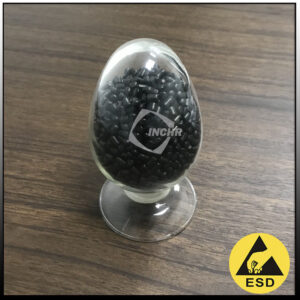Conductive Masterbatch: Unleashing Electrical Conductivity in Plastics
For decades, plastics were prized for their electrical insulating properties. But what if you need plastic to conduct electricity? Enter conductive masterbatch – the game-changing additive transforming ordinary polymers into functional, electrically active materials.
What is Conductive Masterbatch? Product Catalog
At its core, a conductive masterbatch is a concentrated blend. It combines a high loading of electrically conductive filler (typically carbon black, carbon nanotubes, carbon fibers, metal fibers, or intrinsically conductive polymers) within a polymer carrier resin. This concentrated pellet form makes it incredibly efficient for plastics processors. Simply mix the masterbatch with your base polymer (like PP, PE, PA, ABS, PC) during extrusion or injection molding, and the conductive network disperses throughout the final part.
Why Use Conductive Masterbatch? Key Advantages
Simplified Processing: Eliminates the complex, often messy, and potentially hazardous process of handling raw conductive powders directly. Masterbatches flow like plastic pellets.
Optimal Dispersion: Achieving a uniform, percolating network of conductive filler is critical for consistent performance. Masterbatches are engineered for excellent dispersion during standard melt processing.
Dosage Control & Consistency: Precisely control the level of conductivity by adjusting the masterbatch addition rate (e.g., 5-40%). Ensures batch-to-batch repeatability.
Protection: Shields sensitive conductive fillers (like certain carbon nanotubes) from degradation before incorporation.
Cost-Effectiveness: While adding cost, using a masterbatch is often far more economical and efficient than compounding conductive fillers from scratch or using alternative metal components.

Unlocking Critical Applications
By incorporating conductive masterbatch, plastics gain vital functionalities:
ESD (Electrostatic Discharge) Protection: Prevents damaging sparks or shocks. Essential for:
Electronics packaging (trays, films, foam – see our ESD Solutions )
Fuel system components (filters, tanks)
Conveyor components
Flooring
Cleanroom equipment
EMI/RFI Shielding: Protects sensitive electronic devices from electromagnetic interference (EMI) and radio frequency interference (RFI). Crucial for:
Electronic enclosures and housings (computers, medical devices, telecom)
Shielding gaskets
Automotive sensor housings
Conductive Components: Enables plastics to carry current intentionally.
Antistatic brushes
Electrode holders
Heating elements (e.g., floor heating, mirror heaters)
Sensors
Static Dissipation: Prevents dust attraction and handling issues in applications like:
Material handling containers (IBCs, totes)
Conveyor belts
Industrial fans
Automotive interior parts
Choosing the Right Masterbatch & Processing Tips
Selecting the optimal conductive masterbatch depends on:
Target Resistivity: Do you need surface conductivity (ESD: 10⁴ – 10¹¹ Ω/sq), volume conductivity (shielding: often <100 Ω/sq surface resistivity), or true electrical conduction? Carbon black masterbatches are cost-effective for ESD and moderate shielding. Carbon nanotube (CNT) masterbatches offer superior conductivity at lower loadings and better mechanical property retention, ideal for demanding shielding. Carbon fiber masterbatches provide conductivity plus high stiffness/strength. Explore our range of Conductive Compounds.
Base Resin: Compatibility is key. Masterbatches are formulated for specific polymer families (polyolefins, engineering plastics).
Mechanical Property Requirements: Some fillers impact toughness or surface finish more than others. CNTs often preserve properties better than high carbon black loadings.
Regulatory Needs: Food contact, medical, or automotive approvals may be required.
Processing Considerations:
Thorough Mixing: Ensure uniform dispersion in the melt. Twin-screw extruders are ideal for compounding; ensure good distributive mixing during final processing.
Avoid Over-Shearing: Excessive shear can break down conductive networks (especially fragile ones like some CNT agglomerates), reducing conductivity.
Temperature Profile: Follow masterbatch supplier recommendations to avoid degrading the filler or carrier resin.
Mold Design: Conductive compounds may cool differently; gate location and cooling channels impact part properties and warpage.
The Future is Conductive
Conductive masterbatch technology is continuously evolving. Research focuses on higher conductivity at lower loadings, improved dispersion techniques, multi-functional masterbatches (e.g., conductive + flame retardant), and exploring novel fillers like graphene. As demand grows for smarter, lighter, and EMI-protected electronic devices, electric vehicles, and advanced industrial components, conductive masterbatches will play an increasingly vital role in enabling the next generation of functional plastics.
Ready to integrate electrical conductivity into your plastic parts? Conductive masterbatch offers a practical, efficient, and versatile solution, unlocking a world of possibilities beyond insulation. Discover the right formulation to meet your specific resistivity, processing, and performance goals.




